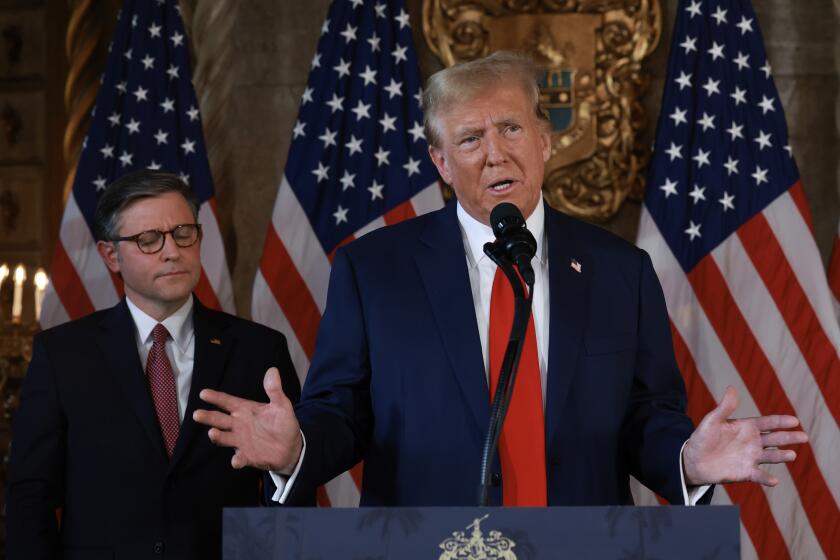On campaign contributions, don’t split the baby, Mr. Chief Justice
Going into Tuesday’s Supreme Court oral argument, supporters of limits on campaign contributions were afraid, very afraid, that a majority of the court would signal that it was ready to declare them unconstitutional. Based on questions and comments from Chief Justice John G. Roberts Jr., widely viewed as the swing vote in the case, their trepidation seems at least partly justified.
The issue before the court is whether it violates the 1st Amendment to limit donors to an “aggregate” limit on what they can donate to all candidates and party committees combined; the current ceiling is $123,200. Shaun McCutcheon, a Republican donor from Alabama, has challenged the aggregate limit, though not the “base” limit on what a donor can give an individual candidate ($2,600 in the current election cycle).
In its landmark 1976 decision in Buckley vs. Valeo, the court drew a distinction between limits on expenditures by candidates and independent groups, which violate the 1st Amendment, and limits on contributions to candidates and parties, which receive less constitutional protection. The theory is that contributions are less of an expressive act and are likelier to lead to corruption.
This distinction has been ridiculed both by conservatives who believe contributions and expenditures should be unregulated, and by liberals who think both can be subject to limits to constrain the influence of big money. Justice Elena Kagan channeled the latter group at Tuesday’s argument when she told Solicitor General Donald Verrilli: “I suppose that if this court is having second thoughts about its rulings that independent expenditures are not corrupting, we could change that part of the law.”
That’s not going to happen. But will the court reconsider its tolerance for limits on how much a donor can give overall in an election cycle? It looks that way.
A lower court that ruled against McCutcheon asserted that without aggregate limits, a donor could make a huge contribution to a committee soliciting for several candidates, which would then be stealthily steered to a single race, circumventing the “base” limit. (Justice Samuel A. Alito Jr. sneered at what he called “wild hypotheticals.”)
But circumvention is only one argument for aggregate limits. The other is that allowing donors to give huge checks to multi-candidate committees puts the party leaders who front such committees in the donors’ debt.
Here, Roberts seemed to say that he might split the baby, permitting someone like McCutcheon to give directly to as many candidates as he pleased (up to the base contribution limit) but limiting the size of donations to multi-candidate committees.
“Is there -- is there any way to prevent the concern you have about the 3-point-whatever-it-is million-dollar check without imposing the limit on the person who wants to support 10 candidates rather than one?” he asked Verrilli. Alito agreed that “these aggregate limits might not all stand or fall together.” In other words, the court would take away the sticker shock of a large donation.
That would deal with the unsavory optics of a wealthy donor presenting the president or party chairman with a huge check. But presidents and party leaders in Congress would still have access to information showing that Mr. Moneybags had maxed out his contributions to every one of the party’s candidates. Wouldn’t such spectacular largess engender the same sense of gratitude -- and the same potential for a quid pro quo -- as the presentation of a single million-dollar check?
Don’t split the baby, Mr. Chief Justice.
ALSO:
Could it be Satan? Scalia says yes.
A liberal nightmare at the Supreme Court?
Olympia Snowe: This is no way to run a country
More to Read
A cure for the common opinion
Get thought-provoking perspectives with our weekly newsletter.
You may occasionally receive promotional content from the Los Angeles Times.











